If you are familiar with Hoya plants, then you will know that they are noted for their dark green, waxy leaves. Some of them almost appear to be artificial since they are so hardy looking and mimic a lot of fake plants that are now on the market.
I am going to discuss the Hoya Kentiana plant today and we’ll see what is so special about this hoya. Hopefully, we can suss out some of the special traits that this plant has and see if it’s one you might be interested in!
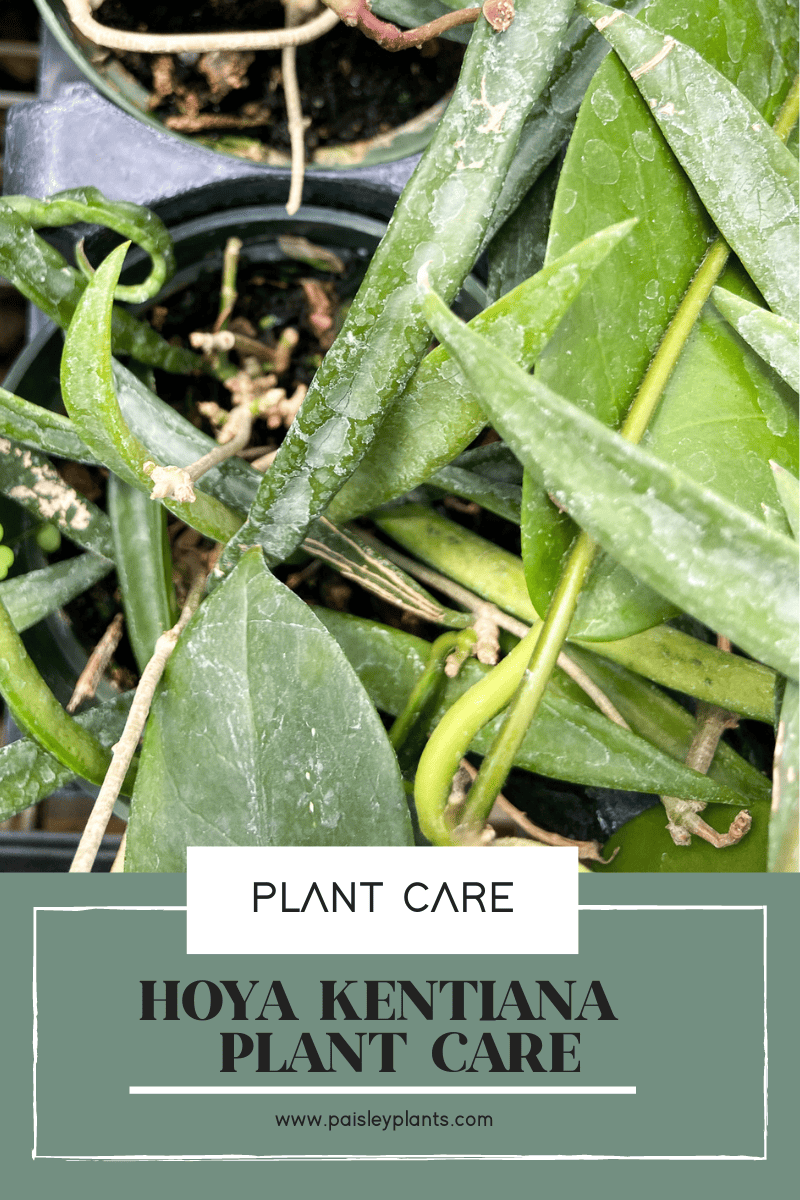
Table of Contents
Hoya Kentiana Background and History
The Hoya Kentiana is native to several countries of Asia such as India, the Philippines, Thailand, Vietnam, Malaysian Bangladesh, Indonesia, New Guinea, and Polynesia. Some species are also found in Australia.
There are over 500 plants in the dogbane family, Apocynaceae. These are in the tropical plant family.
Some of the common names for the Hoya Kentiana are Wax Plant, Wax Vine, Wax Flower, or Bamboo Leaf. They are also referred to at times as simply a Hoya plant.
These plants have unique foliage – long, pointed leaves with a waxy surface. The Hoya kentiana variegata have creamy white centers with darker green on the outside. They sometimes have a pink color to them as well.
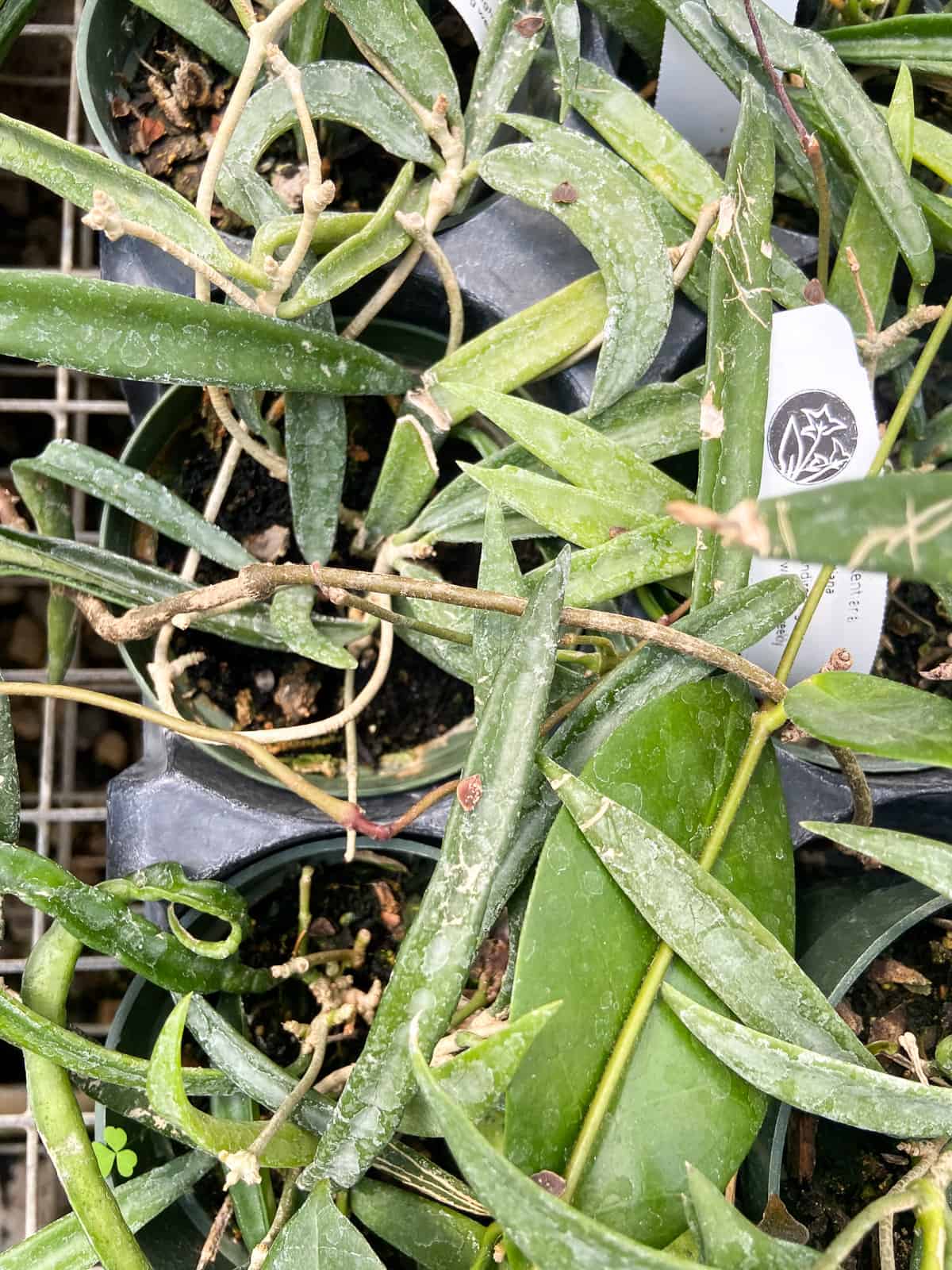
Toxicity
Fortunately, the Hoya Kentiana plant is not considered toxic to either humans or pets. However, small children could have some skin irritation from the sap of parts of the plant. Also, swallowing any part of the plant could be a choking hazard for them or even pets. So, to be safe, you should keep your plant out of the reach of your small children or pets.
Hoya Kentiana Care Tips
With proper care, your Hoya kentiana can be a beautiful addition to any home. Here’s our best care tips!
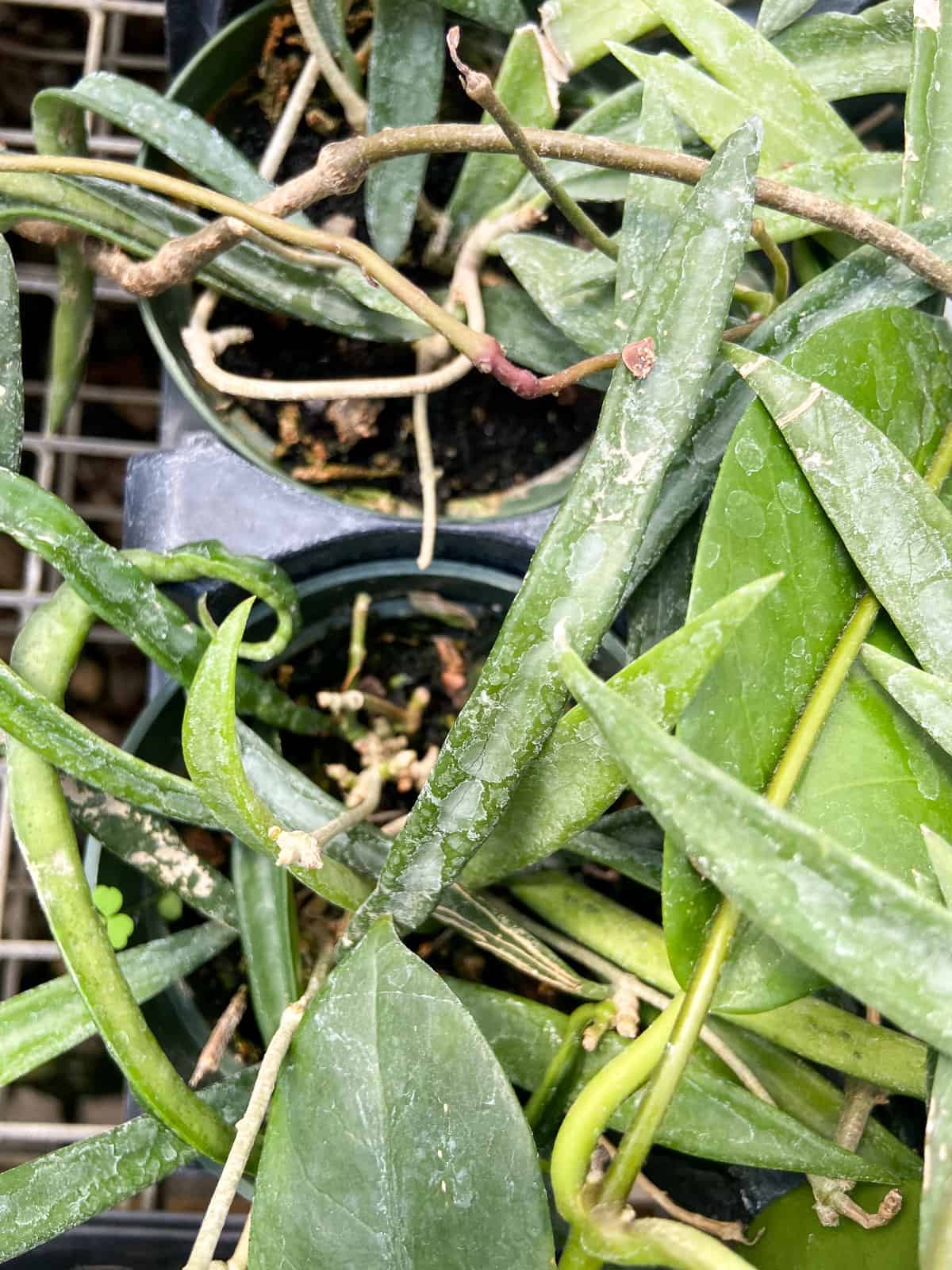
Water Requirements
One thing to always remember is that your Hoya Kentiana does not need much water. It has a very low demand for water. You need to allow the soil to dry out completely between waterings. If you overwater it, you risk having the plant rot or exposing it to root rot.
If the leaves become soft and mushy, that is a sure sign you have overwatered your plant! Be sure the pot has good drainage and allow the water to completely drain out of the pot when you water. If you underwater your plant, the green leaves may turn brown. Keep to a regular watering schedule and your plant should thrive.
Light Requirements
The most ideal lighting conditions for your Hoya Kentiana is medium to bright, indirect light. This can be in front of a window that gets morning or evening sun, but the plant should not be placed in direct sunlight in the afternoon as that could scorch the leaves. The glass from the windows can intensify the heat, so be careful.
If you don’t get lots of light in your home, these plants also do well when grown under grow lights. If you live in a location that has long winters (like me!), you can use grow lights to enhance the lighting conditions for your plant. I have lots of windows in my house, but only a few of them have good light during the winter months, so I do use grow lights for the duration of that time of year.
Soil Requirements
The best soil for your Hoya Kentiana is a very well-drained soil. If you are able to find a good peat based soil, this would be great. You can also add lots of organic matter such as orchid bark mix, cactus mix, vermiculite and perlite to help with drainage.
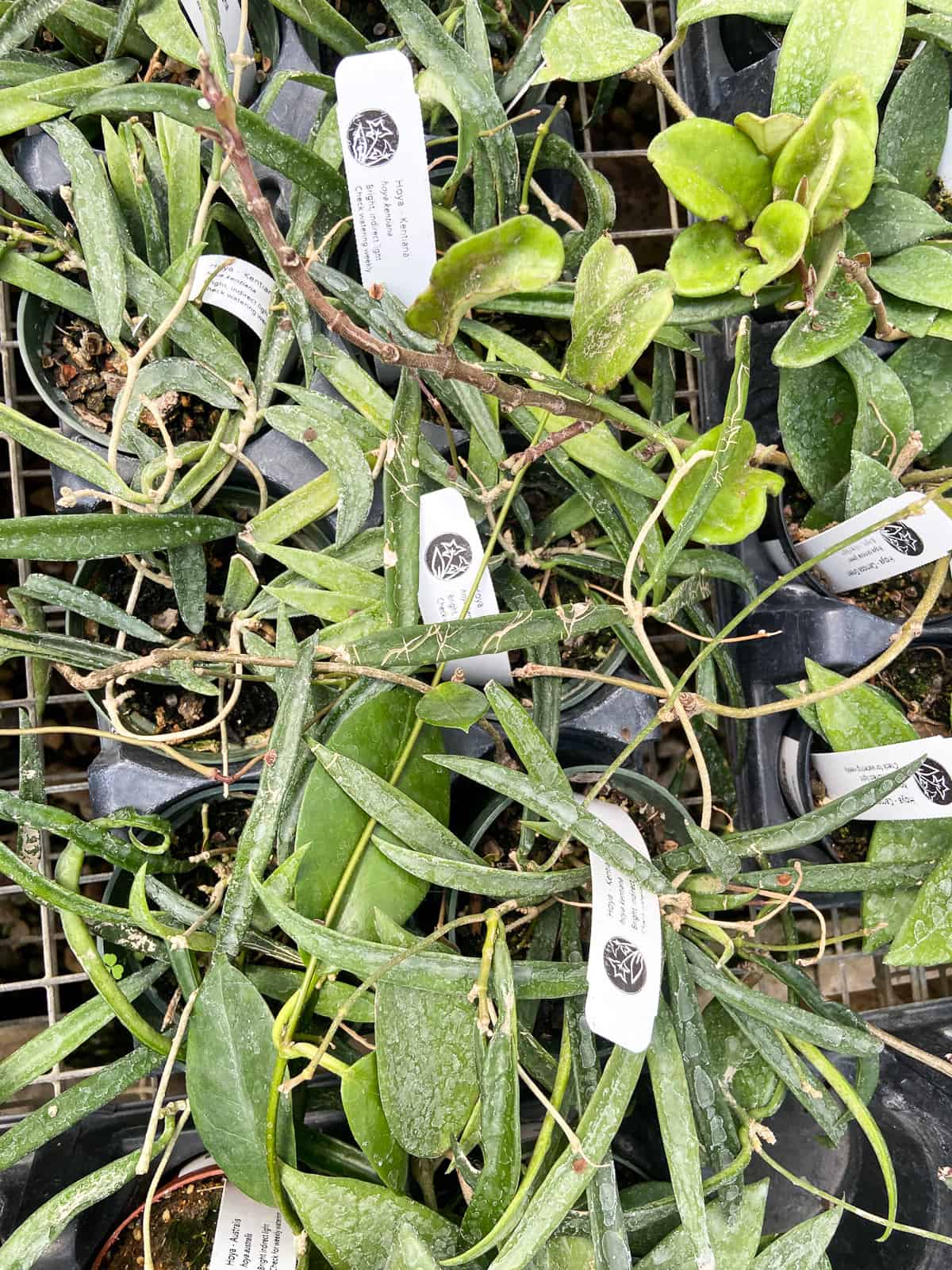
Fertilizer Requirements
As far as fertilizing your Hoya Kentiana goes, use a diluted liquid fertilizer at half strength. This should be done every four to six weeks during the spring and summer months. You won’t need to do this during the fall and winter months, however, which is the dormant period for your Hoya.
Temperature and Humidity
Since this plant is native to a tropical climate, it will do best in warm, humid conditions. You should keep it in an environment where the temperatures are between 65 and 80 degrees F. Any temperature below 60 degrees F is not good for your plant, however. This can halt growth and cause leaf drop.
The best humidity level for your Hoya Kentiana is around 50%. If it gets much below this, the leaves may turn brown and crispy. If you go much above the 50%, then you might be in danger of root rot in your plant. There is a delicate balance between the temperature and the humidity, so keep a close eye on both and you should be able to figure out a good balance between the two!
Pests and Diseases
The most common pests for the Hoya Kentiana are the ones that suck the sap from leaves such as aphids, scale and mealybugs. You will need to check your plants regularly to ensure there are no pests on the leaves. If you do find that there are any, you need to immediately isolate them from your other plants.
You will also then need to deal with them as soon as possible so the infestation does not become worse. You can treat all of these pests with neem oil applied to the leaves.
Fungal leaf spot is one disease that Hoyas can get. It can be caused by splashing water on the leaves either by watering from above or by misting your plant directly. Be sure to keep the leaves dry when watering and this should help prevent this from happening.
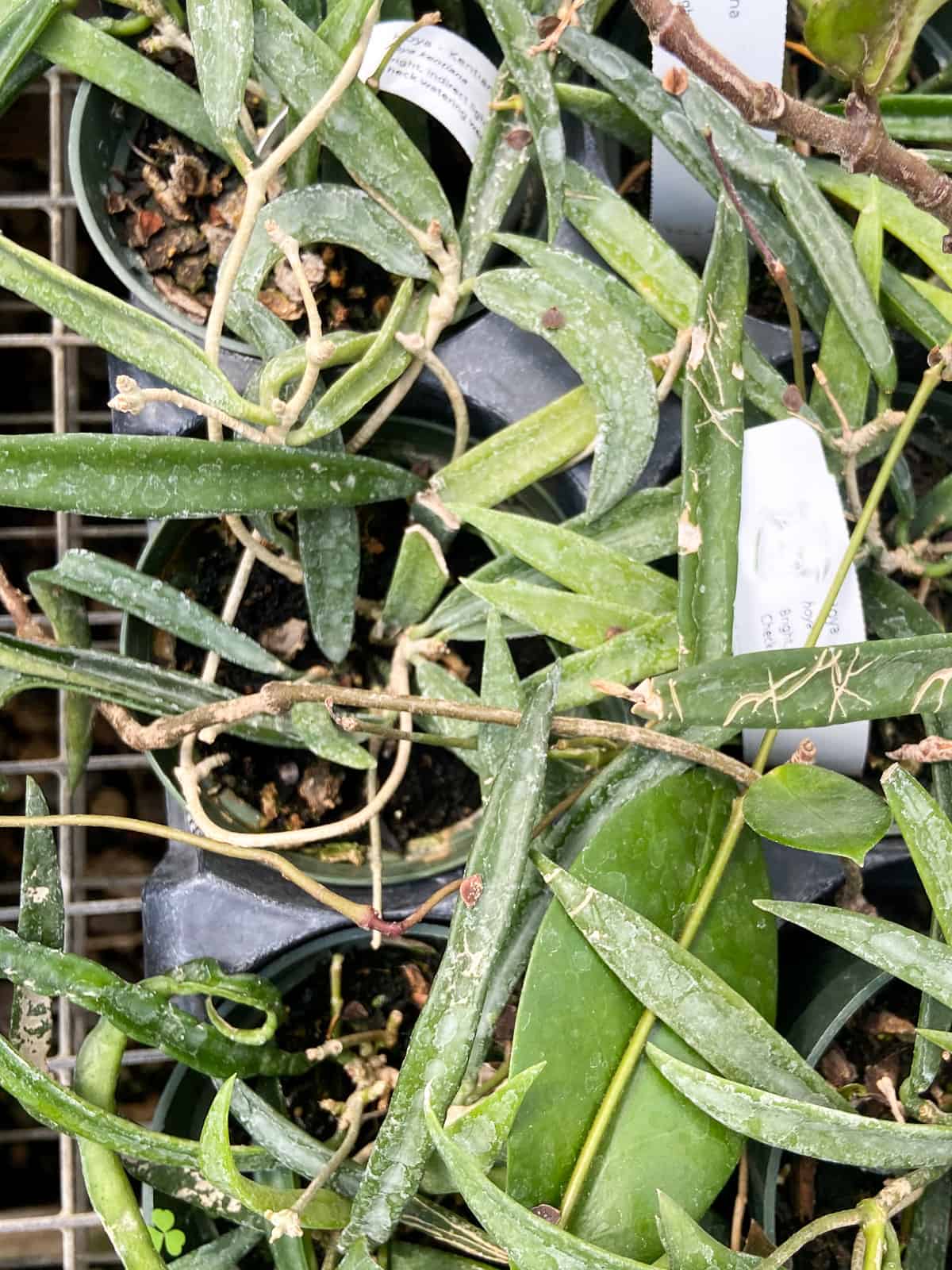
Pruning and Repotting
You always want to remove any dead or dying leaves from your Hoya to keep it healthy. The energy for growing the plant should go to the healthy leaves, not the ones that are dead on the stem. Because these plants are slow growers, they don’t need to be pruned very often. You can cut back the vines, however, if they are outgrowing your space.
One thing to remember is that if (and that’s a big if!) your plant does flower, don’t remove the dead plant blooms because flowers will bloom again from that growth the following year. Your plant may never bloom, but if it does bloom it’s beautiful wax-like star-shaped flowers, this is something to keep in mind.
As far as repotting your plant, these plants are considered to be slow growing, so don’t need to be repotted that often. If your pot starts outgrowing the space you have it growing in, you may need to repot it. If you do, you should use a pot that is at least one to two inches larger than the current pot. Be sure to use fresh soil mix also as this will contain the nutrients needed for the plant that have leached out of the old soil over time.
Common Problems
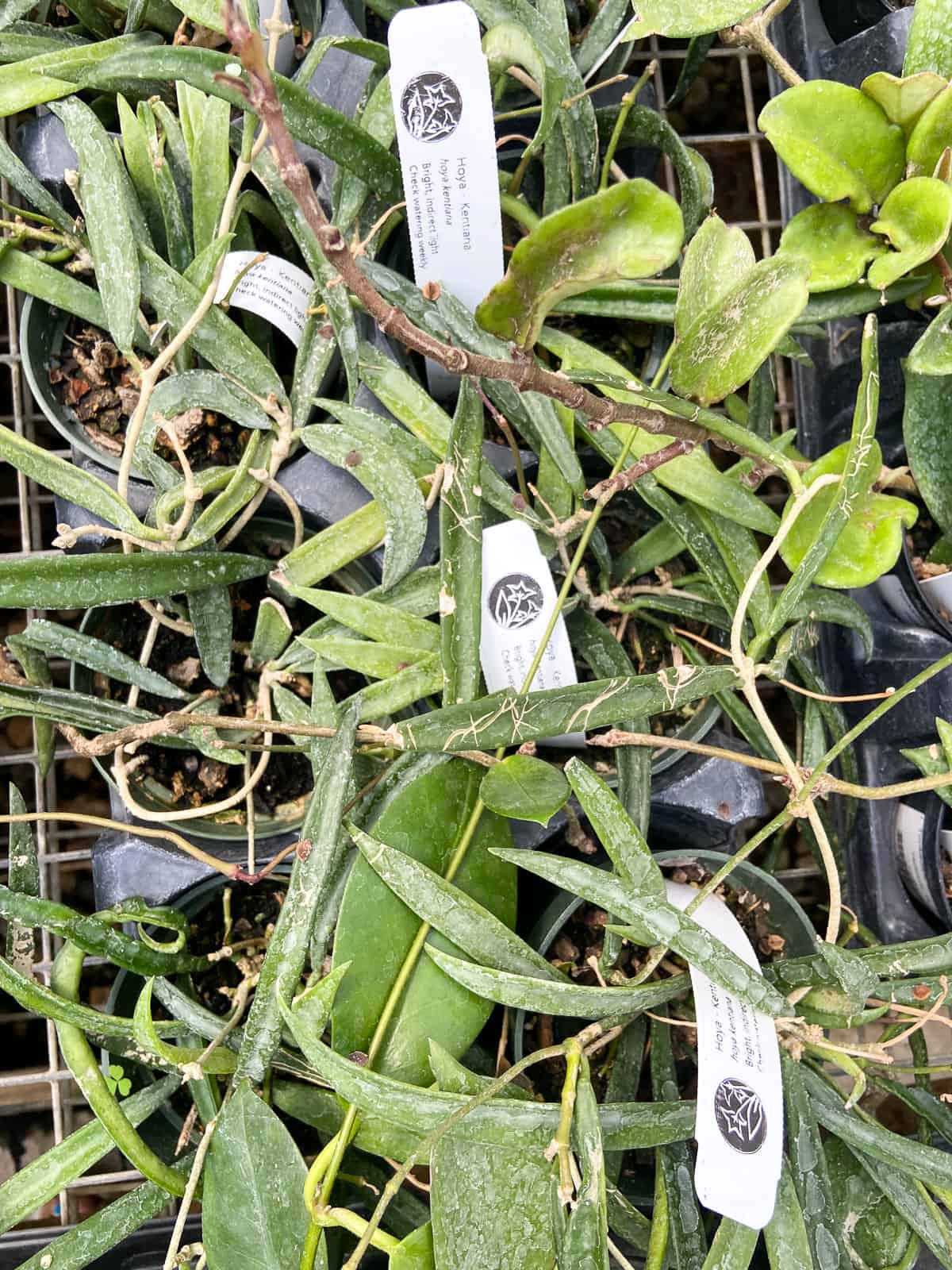
Spongy Leaves
This can be caused by overwatering your plant. The leaves will be cool to the touch and spongy and feel gummy (almost like gummy bears)! Yuck! Be sure you keep a regular watering schedule to avoid overwatering your plant and prevent this from happening.
Yellowing Leaves
This might take some detective work to figure out the cause. It can be from overwatering, underwatering, or lack of light. You will have to start by checking the soil moisture. If it is too wet, this may be the main cause. Stick your fingers into the soil about two inches to see if it is dry. If so, then you should be able to determine that overwatering is not the reason for the yellowing leaves.
If the soil is too dry, then you might not be watering your plant enough. The leaves will begin to dry out and fall off if they are too dry and there is not enough moisture. Again, be sure you keep a regular watering schedule to prevent your plant from drying out too much.
You might also need to determine where you keep your plant and whether there is sufficient light for it. If this is the case, simply move it to a better light source. This should easily solve this problem!
Slow Growth
The signs of slow growth on your plant may be very few new leaves, smaller leaf size, leggy growth from reaching for light, or lack of new vines or trailing growth. This can be solved by moving your plant to a brighter location. You can also increase the number of hours per day of light for your plant.
FAQs
When grown indoors, it is not guaranteed that your plant will bloom. It needs the optimum conditions to produce blooms, so if it doesn’t bloom for you, it may need some changes in how you care for it. If it does bloom, then you are doing a great job!
The Hoya Kentiana and Hoya Wayetti have very similar blooms – reddish-purple flowers on both. It can be very hard to tell a different but the Wayetii blooms are slightly darker. You’re better of looking at the leaves to differentiate these two plants.
The best way to water your Hoya is from the bottom. As mentioned above, getting the leaves wet may cause some fungal diseases, so you need to be careful about this. You also want to be sure that the soil isn’t soaking wet and that the plant isn’t sitting in water. This can lead to root rot.
The simple answer is no. But this doesn’t mean you can’t try this. You will need to research online which of the Hoyas can grow as a hanging plant before you try this. The Hoya Kentiana is one that can grow well in a hanging basket due to its elongated leaves and growth pattern.
In Conclusion
The Hoya Kentiana is a good place to start if you are interested in getting some Hoyas into your plant collection. It is easy to care for and won’t take up much space if you put it in a hanging basket or planter. Give it a try and see how it goes! As always, keep on growing!
